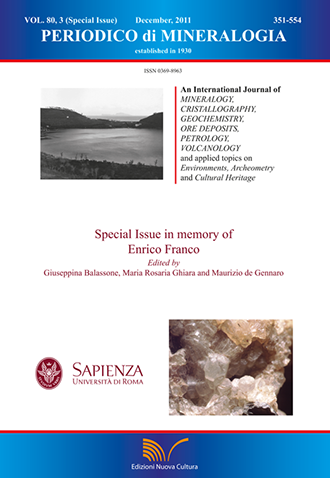Archaeometric study on terra sigillata from Cales (Italy)
DOI:
https://doi.org/10.2451/2011PM0030Keywords:
terra sigillata, Calenian stamps, Satrius stamp, CalesAbstract
Mineralogical and petrographical studies on 23 ancient pottery fragments of terra sigillata from ancient Cales (today Calvi Risorta, Caserta) are here discussed. Stamps on pottery surfaces assigned the fragments to Cales and other Italian workshops acting in Arezzo and Northern Italy area between 1st century B.C.-1st century A.D., other stamped fragments have an uncertain provenance. The mineralogical and petrographical features of pastes have been detected using optical microscopy, X-ray diffraction, X-ray fluorescence, and DTA-DTG analyses. The geochemical comparisons among ceramics, production indicators of Calenian pottery (Black Glazed pottery spacers) and local clayey raw materials allowed to distinguish locally produced potsherds from imported ones. Moreover, the whole archaeological and archaeometric data set allowed to draw main technological aspects of a fine ware production much used on rich roman tables.


